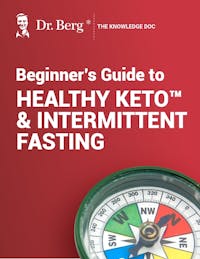Bile Acid Diarrhea

How to Read Your Body
Learn to recognize common symptoms and uncover their underlying health issues
Understand the signs of nutrient deficiencies to manage your health
Explore the four metabolic body types and the core factors that influence them
Interpret your body's signals from head to toe to identify potential health concerns

How to Read Your Body
Learn to recognize common symptoms and uncover their underlying health issues
Understand the signs of nutrient deficiencies to manage your health
Explore the four metabolic body types and the core factors that influence them
Interpret your body's signals from head to toe to identify potential health concerns

How to Read Your Body
Learn to recognize common symptoms and uncover their underlying health issues
Understand the signs of nutrient deficiencies to manage your health
Explore the four metabolic body types and the core factors that influence them
Interpret your body's signals from head to toe to identify potential health concerns

How to Read Your Body
Learn to recognize common symptoms and uncover their underlying health issues
Understand the signs of nutrient deficiencies to manage your health
Explore the four metabolic body types and the core factors that influence them
Interpret your body's signals from head to toe to identify potential health concerns

How to Read Your Body
Learn to recognize common symptoms and uncover their underlying health issues
Understand the signs of nutrient deficiencies to manage your health
Explore the four metabolic body types and the core factors that influence them
Interpret your body's signals from head to toe to identify potential health concerns

How to Read Your Body
Learn to recognize common symptoms and uncover their underlying health issues
Understand the signs of nutrient deficiencies to manage your health
Explore the four metabolic body types and the core factors that influence them
Interpret your body's signals from head to toe to identify potential health concerns

How to Read Your Body
Learn to recognize common symptoms and uncover their underlying health issues
Understand the signs of nutrient deficiencies to manage your health
Explore the four metabolic body types and the core factors that influence them
Interpret your body's signals from head to toe to identify potential health concerns

Beginner’s Guide to Healthy Keto & Intermittent Fasting
Receive a step-by-step guide to starting Healthy Keto® and intermittent fasting
Learn about foundational principles and best practices for beginners
Get detailed visual guidance on portion sizes and meal composition
Discover how to set achievable goals and monitor your progress
Find practical tips for overcoming common challenges and staying motivated

Beginner’s Guide to Healthy Keto & Intermittent Fasting
Receive a step-by-step guide to starting Healthy Keto® and intermittent fasting
Learn about foundational principles and best practices for beginners
Get detailed visual guidance on portion sizes and meal composition
Discover how to set achievable goals and monitor your progress
Find practical tips for overcoming common challenges and staying motivated

Beginner’s Guide to Healthy Keto & Intermittent Fasting
Receive a step-by-step guide to starting Healthy Keto® and intermittent fasting
Learn about foundational principles and best practices for beginners
Get detailed visual guidance on portion sizes and meal composition
Discover how to set achievable goals and monitor your progress
Find practical tips for overcoming common challenges and staying motivated

Beginner’s Guide to Healthy Keto & Intermittent Fasting
Receive a step-by-step guide to starting Healthy Keto® and intermittent fasting
Learn about foundational principles and best practices for beginners
Get detailed visual guidance on portion sizes and meal composition
Discover how to set achievable goals and monitor your progress
Find practical tips for overcoming common challenges and staying motivated

Beginner’s Guide to Healthy Keto & Intermittent Fasting
Receive a step-by-step guide to starting Healthy Keto® and intermittent fasting
Learn about foundational principles and best practices for beginners
Get detailed visual guidance on portion sizes and meal composition
Discover how to set achievable goals and monitor your progress
Find practical tips for overcoming common challenges and staying motivated

Beginner’s Guide to Healthy Keto & Intermittent Fasting
Receive a step-by-step guide to starting Healthy Keto® and intermittent fasting
Learn about foundational principles and best practices for beginners
Get detailed visual guidance on portion sizes and meal composition
Discover how to set achievable goals and monitor your progress
Find practical tips for overcoming common challenges and staying motivated

Beginner’s Guide to Healthy Keto & Intermittent Fasting
Receive a step-by-step guide to starting Healthy Keto® and intermittent fasting
Learn about foundational principles and best practices for beginners
Get detailed visual guidance on portion sizes and meal composition
Discover how to set achievable goals and monitor your progress
Find practical tips for overcoming common challenges and staying motivated
You find yourself racing to the bathroom yet again, a familiar feeling of urgency gripping your gut. Frustration mixes with a sense of defeat as you wonder why this keeps happening.
If you're experiencing persistent, watery diarrhea, often accompanied by an urgent need to go, you might be dealing with bile acid diarrhea (BAD). This condition involves excess bile acids in the colon, leading to uncomfortable and disruptive symptoms.
Let's shed light on this often-misunderstood condition, exploring its causes, symptoms, and what you can do to find relief.
What is Bile Acid Diarrhea?
Think of your digestive system as an intricate dance, where each component has a role to play. Bile, a fluid made by your liver, is crucial for breaking down fats.
Normally, bile acids are reabsorbed into the enterohepatic circulation as they reach the end of your small intestine. But sometimes, things go awry.
When you have bile acid malabsorption, an excess of bile acids makes its way to your large intestine. Your colon, unequipped to handle this surplus, reacts with symptoms like diarrhea, often urgent and explosive. It's disruptive and can be embarrassing, to say the least.
Understanding the Causes of Bile Acid Diarrhea
Determining the root cause of your bile acid diarrhea is essential for effective treatment. There are two main types, each with distinct triggers:
Primary bile acid diarrhea: This type stems from your liver producing too much cholic acid. Conditions like Crohn's disease or previous surgeries that have impacted your ileum (the final section of the small intestine) can be factors.
Secondary bile acid diarrhea: In this case, something hinders your body's ability to properly recycle bile acids. It could be an issue with your ileum itself, such as Crohn's disease or inflammation, preventing proper reabsorption of bile acids. Conditions like celiac disease and small intestinal bacterial overgrowth (SIBO), could also contribute.
Recognizing the Signs and Symptoms
Often, the challenge lies in recognizing if your symptoms actually point to bile acid diarrhea rather than other digestive woes. Since many conditions have overlapping symptoms, a proper diagnosis from a medical professional is essential. Here's what to look for:
Persistent diarrhea: Multiple watery bowel movements a day are common with bile acid diarrhea, sometimes exceeding five times daily.
Urgency: That "gotta-go-now" feeling often accompanies bile acid diarrhoea, making life quite inconvenient.
Abdominal cramping: You may experience painful cramps or discomfort, primarily located in the lower abdomen.
Bloating and Gas: These uncomfortable symptoms frequently arise from the excessive bile acids affecting gut bacteria and fermentation processes.
Pale Stools and Steatorrhea: In some instances, your stools might appear pale and greasy. This indicates fat malabsorption, a sign that your body isn't breaking down and absorbing fat as it should due to the disrupted bile acid balance.
Keep in mind that these symptoms often overlap with other digestive disorders. It's vital to consult your doctor for accurate diagnosis and to rule out other potential conditions like irritable bowel syndrome (IBS).
This is especially important as untreated bile acid malabsorption can lead to vitamin deficiencies.

Diagnosing and Treating Bile Acid Diarrhea
Your journey towards finding relief from bile acid diarrhea starts with an accurate diagnosis. Since the symptoms mirror other digestive conditions, a multifaceted approach is often needed.
Your healthcare providers will help guide you through the diagnostic process.
Diagnosis usually involves:
A detailed medical history: Your doctor will want to understand your symptoms in depth. This involves discussing the frequency, consistency, and duration of your diarrhea, any associated pain, and factors that seem to trigger episodes. Be prepared to answer questions about your past medical history, particularly any gastrointestinal issues you've experienced.
Physical Examination: The examination typically involves your doctor palpating (gently pressing on) your abdomen to assess for any tenderness or abnormalities.
Stool Tests: A fecal BA test helps analyze the fat content in your fecal matter. Excessive fat suggests malabsorption, potentially pointing to bile acid diarrhea. You might see this being referred to as a fecal bile acid test as well.
Blood Tests: These tests can help rule out other conditions, such as celiac disease, by checking for certain antibodies in your bloodstream. They can also give your doctor insight into how your liver is functioning. Since your liver is responsible for bile acid synthesis, it is important to get a clear picture of your liver health.
SeHCAT scan: This specialized test, which stands for selenium homocholic acid taurine or 75SeHCAT test, uses a radioactive tracer to assess how efficiently your body absorbs bile acids. This test measures levels of the tracer in your body over time to determine how well your bile acids are being absorbed. The SeHCAT scan is considered the gold standard for diagnosing bile acid diarrhea. However, access to this test can be limited, and it might not be available in all areas.
Treatment Options for Bile Acid Diarrhea
Your treatment plan will hinge on the underlying cause and the severity of your symptoms. Generally, your doctor might recommend one or a combination of the following:
Beyond these treatments, your doctor will also address any underlying conditions contributing to your bile acid diarrhea. For instance, if you have uncontrolled celiac disease or Crohn's disease, managing those conditions is crucial for alleviating BAD symptoms.
Living with Bile Acid Diarrhea
Living with a chronic condition like bile acid diarrhea can be challenging. The urgency, frequent bathroom trips, and abdominal discomfort can take a toll on your quality of life. However, there are things you can do to regain control:
Keep a symptom diary: Tracking your food intake, bowel movements, and any symptoms you experience can help you and your doctor identify potential triggers. This valuable information can guide dietary adjustments or medication timings to better manage your condition.
Stay Hydrated: Diarrhea can lead to dehydration, so it's crucial to drink plenty of fluids, especially water and electrolyte-rich beverages, throughout the day.
Find Support: Don't hesitate to reach out to support groups or online communities where you can connect with others who understand what you're going through.

Digestive Dilemmas
Explores the complexities of maintaining a healthy digestive system amidst various conditions like bile acid diarrhea and Small Intestinal Bacterial Overgrowth (SIBO).
Bile acid diarrhea occurs when excess bile acids enter the colon, leading to symptoms like watery stools, urgency, and abdominal discomfort.
Understanding its causes, such as gallbladder removal or certain gastrointestinal disorders, is key to finding effective treatments, which may include bile acid binders and dietary changes.
Similarly, managing SIBO involves approaches like dietary modifications, targeted antibiotics, and fasting for SIBO. Fasting can be particularly beneficial as it allows the digestive system to rest and clears excess bacteria from the small intestine, promoting gut healing.
Combining strategic dietary interventions and targeted treatments can address these digestive dilemmas, helping individuals achieve better gut health and overall well-being.
Conclusion
Remember, bile acid diarrhea is a treatable condition. With proper diagnosis and management, you can find significant relief from your symptoms and improve your quality of life.
It’s essential to pay attention to your body, seek appropriate medical guidance, and stay proactive in managing your condition.
If you are experiencing chronic diarrhea, it is important to speak to a medical professional to receive an accurate diagnosis and create a treatment plan.
Previous blog
The Benefits of TUDCATags

Popular
08/21/2024
43.5K views
05/22/2024
39K views
11/18/2024
227.5K views
03/18/2024
11/21/2022




